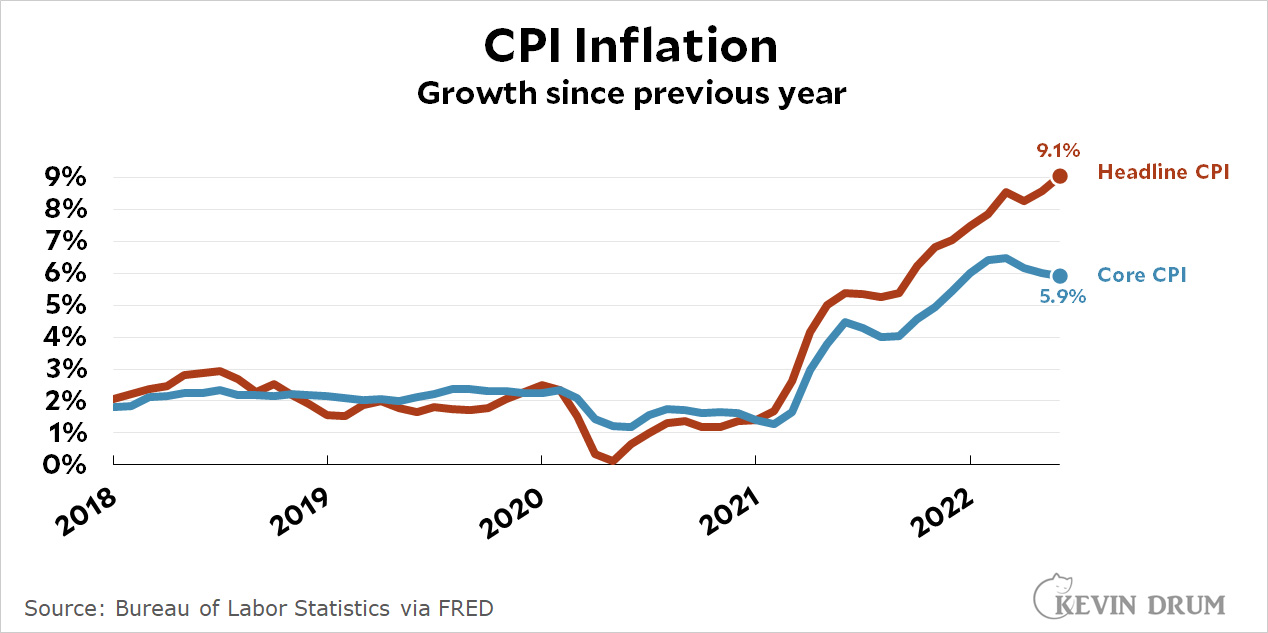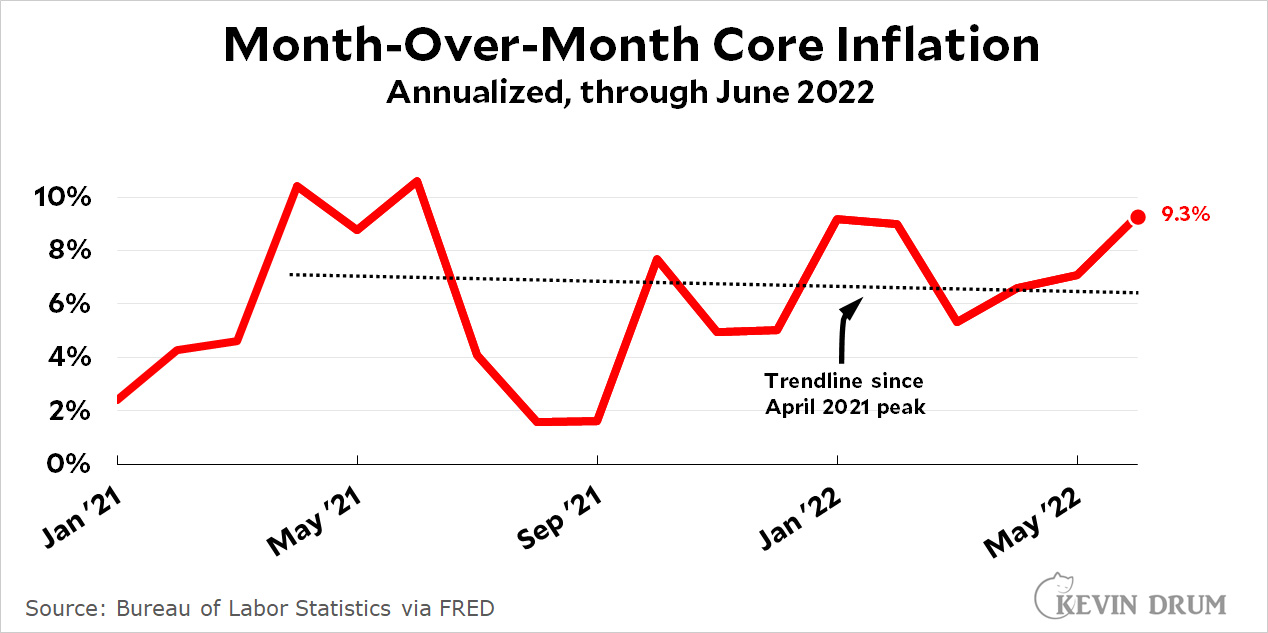Without further ado, ladies and gentlemen, your inflation rate for June:
 As usual, I'm less interested in the headline number and more interested in core CPI, which dropped another tenth of a point last month, ending at 5.9%. It has now declined 0.6% since February.
As usual, I'm less interested in the headline number and more interested in core CPI, which dropped another tenth of a point last month, ending at 5.9%. It has now declined 0.6% since February.
If you want a sense of how inflation is running this month, your best bet is to extract month-over-month figures and then look at the trend. Here's an updated version of my chart from last month, which does exactly that:
 Not so good! The trendline is still down, but the current figure is 9.3%, which marks three consecutive months of strong growth. However, note that this is CPI core inflation, not PCE core, because that's all we have available today.
Not so good! The trendline is still down, but the current figure is 9.3%, which marks three consecutive months of strong growth. However, note that this is CPI core inflation, not PCE core, because that's all we have available today.
Overall, my conclusion is that inflation is under control, which I base on the fact that core year-over-year CPI is continuing to trend down. However, I expect to see a general freakout when I'm finished here and start looking at media coverage. The headline number is all they care about, and it was pretty scary this month.





